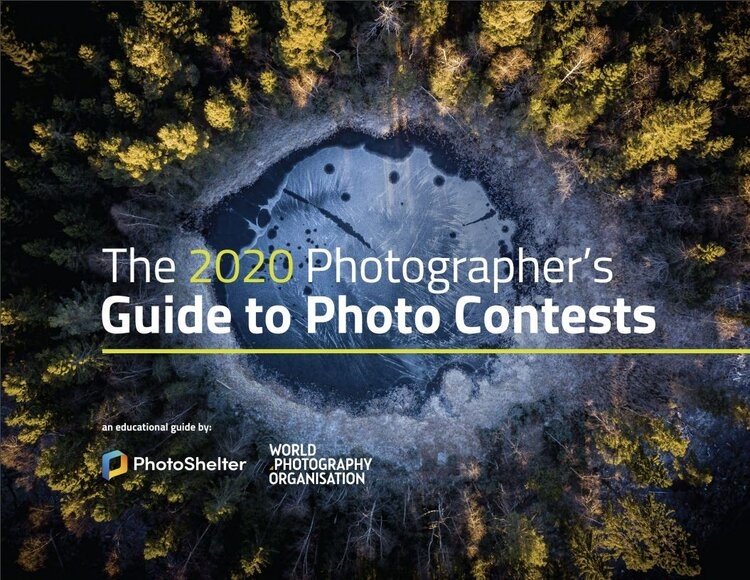Top Tips for Entering Photo Competitions
Following on from last week’s Blog Post ‘Photo Competitions - Are They Worth The Effort’?, here I share some top tips on entering competitions …
TIP 1. DO YOUR RESEARCH
Take time to look through previous years finalists. Does your imagery fit in with this particular competition? Are they celebrating more documentary-styled photos but your aesthetic lends more to creative portraiture? Make sure your artwork fits with the competition, but do not change your artwork in order to fit.
TIP 2. SUBMIT IMAGES THAT ARE MEANINGFUL TO YOU AND THAT TELL A STORY
This follows on from the previous point, make images that are meaningful to you, submit images that are meaningful to you. If a story has meaning to you, more often than not, this will translate across in a meaningful photograph that will resonate with the judges.
TIP 3. ENSURE YOUR IMAGES ARE COHESIVE IF SUBMITTING A SERIES
Some competitions will require a series of images for each submission. If you are entering a series, for example, of three images, the images should fit together in some way or another and unite in terms of theme, story, colour, light etc. Its best not to go entering two black and white images along with a 3rd colour image for example. Or 2 portraits with similar lighting, colour grading etc, and a third that follows a completely disjointed theme or composition. A series of images need to tell a story between them as well as through their individual messages too.
TIP 4. ENTER AS EARLY AS YOU CAN (WITHOUT RUSHING YOUR ENTRY!)
Often entries are judged in order of when they were entered (not always, but often!). Entries that are submitted in the later part of the submission period can fall prey to ‘Judges Fatigue’. By the time the judges get to the later submissions, they may very well have seen similar entries to your own, or they are exhausted, and may not have the same level of energy or excitement for your image, had you entered it earlier. There is no harm in entering early, so why not, if you can!
TIP 5. PAY ATTENTION TO THE DETAILS
All reputable competitions will have specific guidelines that they want submissions to abide by. Do not skim over these, a simple mistake could cause your entry to be voided. These are some things to look out for:
1. Due Date - do not miss the deadline!
2. Image Specifications - this may include file format (eg. jpeg), size (eg. under a certain file size), image length (eg. a fixed length on the longest side), colour output (for example, sRGB), as examples. Ensure the file you export from your editing software adheres to all image specifications.
3. Who can enter - some competitions are aimed at amateurs only, whilst others may require you be a resident of the country from which the competition is run. Check to make sure you fit the eligibility criteria.
4. Post Processing - some comps disallow certain editing techniques - for example, no image manipulation, such as composite elements or heavy handed retouching. And most competitions never allow the use of 3rd party photo elements, for example textures etc. More often than not, a competition will require the entrant to have photographed ALL elements of the image for which they submit.
5. ALWAYS CHECK Copyright - all reputable competitions that I have come across will never take copyright privileges away from the photographer, but there are others that do. You don’t want to lose rights to your own art so be diligent in checking this in the terms and conditions. They may also stipulate that your image could be use for promotional purposes so if you are not comfortable with this, then do not enter.
TIP 6. PUT TIME AND THOUGHT INTO A POWERFUL ARTIST STATEMENT
Always write a statement if the submission allows for it. Don’t assume a viewer will necessarily be able to read into your image to the depth you can. The image can be made 10 times more powerful if the statement lifts it up.
TIP 7. BE PREPARED TO RECEIVE FEEDBACK IF THEY OFFER IT
But always know that it is just an opinion. Which leads on to the last point …
TIP 8. DON’T BE DISHEARTENED!
You are likely going to receive far more knock-backs then wins, and that is the reality.
Treat each competition that you enter as an opportunity to grow and learn. And remember, if an image doesn’t do well in one competition, that’s the opinion of just that judge, or group of judges,. That is not to say it isn’t a great image. I have submitted images into one competition which did poorly, but in another competition was a finalist and hung in one of the nations most prestigious portrait galleries! At the end of the day, judges are all human and they will bring into their judging a level of subjectivism which is unavoidable.
If you don’t do well in one, lick your wounds for a day, then lift your chin up, and keep trucking on!
SO, ARE YOU READY TO START ENTERING COMPETITIONS BUT NOT SURE WHICH ONES ARE WORTH THE EFFORT?
The good folk over at PhotoShelter have done much of the hard work for us and put together a comprehensive guide to some of the worlds best competitions. Grab a copy of this incredibly helpful guide here:
https://resources.photoshelter.com/photographers-guide-photo-contests/
